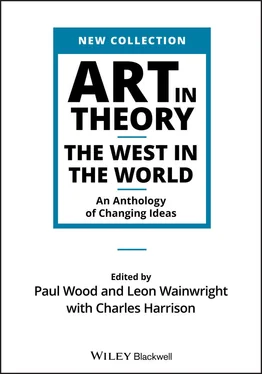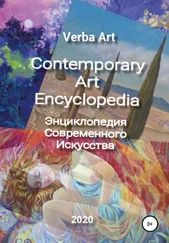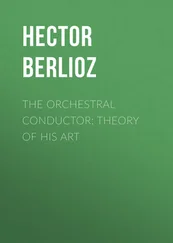New‐Holland is a very large Tract of Land. It is not yet determined whether it is an Island or a main Continent; but I am certain that it joins neither to Asia, Africa, nor America . […]
The Inhabitants of this Country are the miserablest People in the World. The Hodmadods of Monomatapa , though a nasty People, yet for Wealth are Gentlemen to these; who have no Houses, and skin Garments, Sheep, Poultry, and Fruits of the Earth, Ostrich Eggs, &c. as the Hodmadods have: And setting aside their Humane Shape, they differ but little from Brutes. They are tall, strait‐bodied, and thin, with small long Limbs. They have great Heads, round Foreheads, and great Brows….
They have great Bottle‐Noses, pretty full Lips, and wide Mouths. The two Fore‐teeth of their Upper‐jaw are wanting in all of them, Men and Women, old and young; whether they draw them out, I know not: Neither have they any Beards. They are long‐visaged, and of a very unpleasing Aspect, having no one graceful Feature in their Faces. Their Hair is black, short and curl’d, like that of the Negroes; and not long and lank like the common Indians . The Colour of their Skins, both of their Faces and the rest of their Body, is Coal‐black, like that of the Negroes of Guinea .
They have no sort of Cloaths, but a piece of the Rind of a Tree tied like a Girdle about their Waists, and a handful of long Grass, or three or four small green Boughs full of Leaves, thrust under their Girdle, to cover their Nakedness.
They have no Houses, but lie in the open Air without any covering; the Earth being their Bed, and the Heaven their Canopy. Whether they co‐habit one Man to one Woman, or promiscuously, I know not; but they do live in Companies, 20 or 30 Men, Women, and Children together. Their only Food is a small sort of Fish, which they get by making Wares of Stone across little Coves or Branches of the Sea. […] When they have eaten they lie down till the next Low‐water, and then all that are able march out, be it Night or Day, rain or shine, ’tis all one; they must attend the Wares, or else they must fast: For the Earth affords them no Food at all. There is neither Herb, Root, Pulse nor any sort of Grain for them to eat, that we saw; nor any sort of Bird or Beast that they can catch, having no Instruments wherewithal to do so.
I did not perceive that they did worship any thing. These poor Creatures have a sort of Weapon to defend their Ware, or fight with their Enemies, if they have any that will interfere with their poor Fishery. They did at first endeavour with their Weapons to frighten us, who lying ashore deterr’d them from one of their Fishing‐places. Some of them had wooden Swords, others had a sort of Lances. The Sword is a piece of Wood shaped somewhat like a Cutlass. The Lance is a long strait Pole sharp at one end, and hardened afterwards by heat. I saw no Iron, nor any other sort of Metal; therefore it is probable they use Stone‐Hatchets, as some Indians in America do….
How they get their Fire I know not; but probably as Indians do, out of Wood. I have seen the Indians of Bon‐Airy do it, and have my self tried the Experiment: They take a flat piece of Wood that is pretty soft, and make a small dent in one side of it, then they take another hard round Stick, about the bigness of one’s little Finger, and sharpening it at one end like a Pencil, they put that sharp end in the hole or dent of the flat soft piece, and then rubbing or twirling the hard piece between the Palms of their Hands, they drill the soft piece till it smoaks, and at last takes Fire.
IC Scholarly Responses
IC1 Anon. from the Inventory of the Palazzo Medici
Lorenzo de’ Medici (1449–92) was head of the Medici family from the age of twenty, and in that role was one of the leading intellectual and political figures of the Florentine Renaissance. On his death, as was common practice (cf. IA7), his heirs had an inventory made of the family’s possessions. The inventory is well known and famous largely for showing how things which are very highly valued today, such as works of ‘fine art’, were then seen as less valuable than other objects which have since been relegated to the status of the crafts or ‘applied arts’ – including tapestries, furniture, jewellery and antiques. That is not the main purpose of the present selection, although we have included some paintings and carvings for comparison, including Brunelleschi’s important perspective rendering of the Palazzo de’ Signori and the surrounding piazza. The inventory is a long document, running to over 130 pages in a modern book, so our extracts are relatively fragmentary. What we have focussed on here is the number of exotic items included in the Medici palace. It is important to remember that this is not a dedicated ‘cabinet of curiosities’ as such but the record of a working household. It includes barrels of wine, saucepans and bolts of fabric for future use, as well as objects from distant lands including pieces of textile, diplomatic gifts and Byzantine mosaics, in addition to Lorenzo’s own collection of antiquities and exotica. The result is a picture of an interconnected world, at least for patricians, wherein porcelain from China sits beside Moorish textiles, ‘damascene’ metalwork, Turkish weaponry and natural things such as coral and ivory. Our source is Richard Stapleford, Lorenzo de’ Medici at Home: The Inventory of the Palazzo Medici in 1492 , Pennsylvania: Pennsylvania State University Press, 2013; the selections are from pp. 67–8, 71, 74, 76, 79, 81, 83, 88–9, 93–4, 96–8, 103–4, 107, 109–10, 112–16, 120–2, 124 and 189–90. The valuations are in Florentine florins .
In the Sale Grande suite of the ground floor loggia
| In the first cassone [chest] |
|
| A tapestry wall hanging … depicting a hunt by the Duke of Burgundy |
f.100 |
| In the other cassone |
|
| A silk carpet‐weave table cover in the Moorish style patterned with squares … |
f.10 |
| Another carpet‐weave table cover of silk in the Moorish style, patterned with squares … |
f.15 |
The chamber of Lorenzo in the Sala Grande suite of the ground floor
| Six paintings … above the bedstead framed all around in gold … three depicting the rout at San Romano and one a battle of dragons and lions and one the story of Paris, from the hand of Paolo Uccello, and one in which is depicted a hunt by Francesco di Pesello |
f.300 |
| […] In the cupboard with seven shelves set into the panelling |
|
| First shelf : Nineteen plates from large to small, a large vase, two small vases, a terra‐cotta vase, four shallow cane bowls in a leather case: all in [Chinese] porcelain of many colours |
f.150 … |
| Third shelf : Twenty small plates of white and blue porcelain |
f.15 |
| Fourth shelf : A large platter, three vases like jars, of which one has a cover and another is like a flask, two large ewers, three small casks to use as flasks, three blue ewers, four large white mugs, all of porcelain … |
f.75 … |
| Sixth shelf : Nine large bowls of green porcelain |
|
| Two blue and white porcelain basins […] |
f.30 … |
In the room above the bath
| […] Two elephant teeth … that were sitting on the clothes rack of the room and were overlooked by me |
f. — |
The chamber of the two beds
Читать дальше












